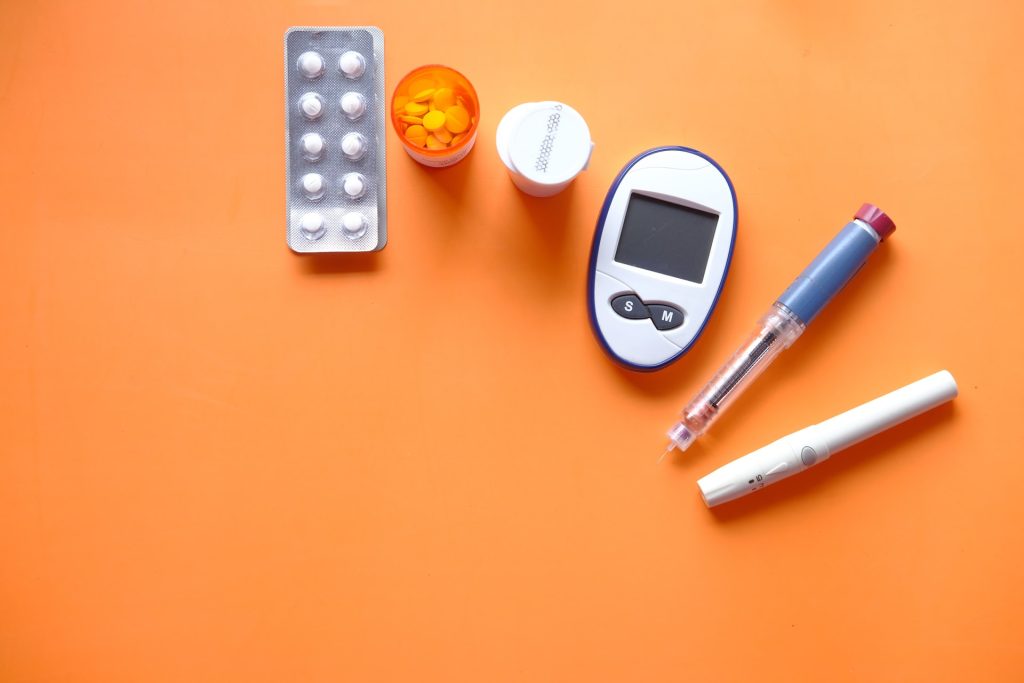
For diabetics, the makeup of insulin doses – governed by the proportion of insulin molecule clusters present – are crucial for effective treatment. Getting too little or too much insulin can lead to hyperglycaemia or hypoglycaemia. A new study appearing in Communications Biology has discovered that though it is not a danger to patients, an assumption underlying the design of insulin preparations is well off the mark.
The absorption of insulin in the body is controlled by how insulin molecules assemble themselves in clusters. Whereas a single molecule provides rapid action in the body, clusters of six molecules – known as hexamers – are long-acting. For decades, it has been assumed that insulin assembles with a certain distribution of molecular clusters of either one, two or six molecules. Pharmaceuticals have been designed based upon this assumption – but now researchers have discovered that this important point has been wrong for years.
“It is now apparent to us that we’ve gotten things wrong by 200 percent. There are only half as many single molecules in insulin compared to what we thought. Conversely, there are far more six-molecule clusters than we assumed. These experiments were not on animals but were performed on a microscope slide and one should be careful how to interpret their direct application to humans,” says study lead author Professor Nikos Hatzakis of the University of Copenhagen.
He adds: “However, our results may mean that when we believe to be administering a certain dose, it may mean that insulin behaves in a different way than expected and that even better insulin therapeutics can be developed.”
This means that insulin taken by diabetics may not be getting absorbed as expected. Though the researchers stress that it is not outright dangerous for patients, there is potential for designing more precise medicines.
From a crude model to detailed view
“Insulin preparations have only gotten better and better over the years, and a great many diabetics are well regulated. However, the development of insulin preparations has been based on a certain assumption about how the molecules assemble. With the crude standard model, this process was never been appreciated at a detailed level. That’s what we can do,” says the study’s other lead author, Professor Knud J. Jensen, of the Department of Chemistry.
“This doesn’t mean that current insulin medications are bad or that patients have been medicated wrongly. But we now have a basic understanding of how insulin behaves and how much could be available to the body as rapid-acting medication. We now have the right method for providing us with accurate figures. We hope that the industry will use this or a similar tool – both to check current insulin preparations and to develop new ones,” adds Nikos Hatzakis.
The research results were achieved through a mix of chemistry, machine learning, simulations and advanced microscopy. The Department of Chemistry researchers began by directly observing the process in which each insulin molecule joins forces with other molecules to assemble into clusters. This allowed them to see how fast each cluster forms. The researchers looked at about 50 000 clusters.
Knowing the exact distribution of different clusters in a given amount of insulin is fundamental when developing medications that need to have either short- or long-acting effects in the body:
“The clustering of insulin is incredibly important for how preparations work. Because the difference between a rapid- and slow-acting insulin preparation is dependent upon how quickly the molecules assemble in clusters and how quickly they disassemble. Access to highly advanced equipment makes it relatively simple and fast to gain insight into exact concentrations, knowledge that at the same time, is also quite sophisticated,” says lead author Freja Bohr, a PhD fellow in Nikos Hatzakis’ research group at the Department of Chemistry.
Improving insulin preparations
In addition to the different distribution of molecular clusters, the observations also show that cluster formation is a much more complex process than once presumed. The clusters can both grow and shrink at far more different intervals than previously supposed.
“Without being able to say exactly how just yet, this should make it possible to expand the number of ways in which preparations are designed. This could lead to an insulin with a different effect profile that reduces the fluctuations in patients’ blood sugar – which remains a major challenge,” says Freja Bohr.
Source: University of Copenhagen

